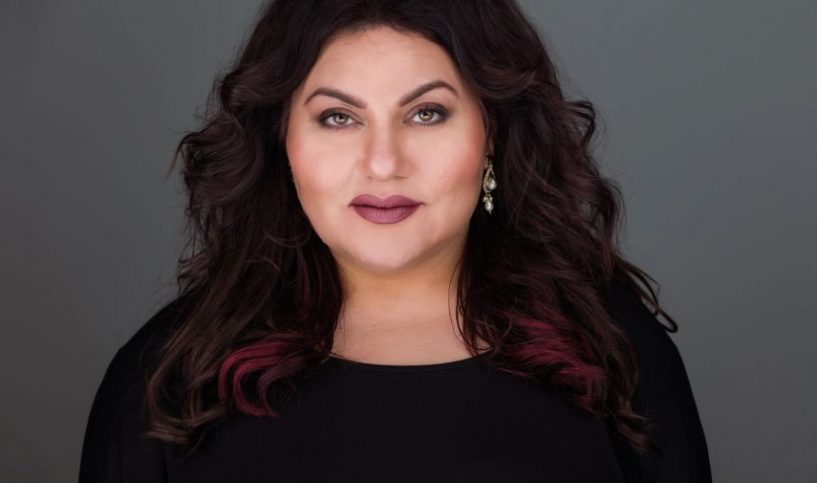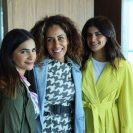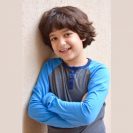I met with Dr. Amar Behbehani on International Women’s Day last month. I couldn’t even think of a day more fitting to speak about her remarkable talents and unrelenting thirst for knowledge, empowerment and creativity.
Building a great career is a universal ambition, yet it doesn’t come easily. It takes grit, passion and determination. For one Dr. Amar Behbehani, however, working in the field of creative education while simultaneously helping people as an art therapist is her life-long ambition. In constant pursuit of knowledge and never hesitating to ask ‘why’, Amar successfully bridges the gap between art and science.
“When I was seven years old, I had a beautiful art teacher who sparked my creative intelligence,” began Amar, “I was born with a disability, or what I call an exceptional ability, without my left fingers. Yet, I was taught how to weave. Another music teacher taught me how to play the piano.” Amar’s childhood education experience in Kuwait reflected a time and society that truly believes in the importance of creative education. While ‘creative education’ might not have been an officially declared field of knowledge at the time, Amar considered her educational hub as the first marker of inspiration. “I didn’t know I was inspired at the time! All I remember were these beautiful women who played a role in my creative skill enhancement, and I developed my various creativities accordingly.”
Excelling at her studies was never an issue for the design scientist. It is Amar’s curious quest, however, that led her on an educational journey around the globe. From studying Mass Communications and Fine Arts at The American University in Cairo, undertaking an MFA in Graphic Design and Visual Communication in New York’s Rochester Institute of Technology, to finally arriving in Florida to complete her PhD in Art Education and Art Therapy.
The journey, in and of itself, is remarkable. She said, “I loved living in Cairo, it was such an enriching experience, but I wasn’t happy upon graduating because I always felt that there was more to be discovered. I didn’t like being labeled either as a communications specialist, or an artist. I believed in the function and methodology of art. There had to be a science to it.” Upon returning home as one of the first Kuwaitis in the field, her curiosity was further piqued when the Ministry of Education labeled her education as an arts degree, which then led her on a journey across the pond to New York.
She enjoyed a beautiful two-year experience doing her MFA in New York, presented her work at conferences, and even worked as a media agent to the university as well as being a TA. She recounted, “I was in my element—I knew that I was going to graduate and be a teacher, fully convinced with what I was doing.” Towards the end of her MFA, Amar wished to focus on helping children with learning disabilities through her art. “If we visually enhance our educational materials, individuals with special needs would be able to enhance their intelligences.” To demonstrate her message, Amar designed new reading books for the New York’s school district. This was tested out for an entire semester where readability increased by 60%. It all made sense to Amar. She was armed with a design specialty, and wanted to prove that art and design could be used to improve a person’s well being and quality of life through a PhD Program in Florida.
In doing so, she completed a masters in Psychology while working in the arts education field. She trained to become an art therapist, while still pursuing her passion for arts education. Amar’s experience in Florida exposed her to individuals with various disabilities and illnesses, from working with Alzheimer’s sufferers to rehabilitating prison mates.
One PhD later, Amar learned that if you don’t follow the protocols of education, you cannot lead them. “While I might have my own reservations about certain procedures, the desire to evolve from teacher to educator kept me going. I never liked rules that never made any sense. So I decided to break them, constructively, that is.”
Today, Amar divides her time between Kuwait University teaching design education, typography, graphic design, design sciences and Soor Center as an art psychotherapist. “I worked for it, I’ve been wanting this since I was 19.” The notion of creativity from a design education perspective and embracing our innate and applied creativities is an ethos that Amar lives by. Her students, usually introductory students, are exposed to both philosophical and scientific approaches to creativity. “They know I have expectations, as we are a small department that is still new. Students expect a challenge, and I never underestimate their intelligence. I help them engage their spatial, visual intelligences. I want to be a teacher that is remembered, like I remember my educators.”
As an art therapist, Amar engages her empathetic side, and the experience resets her mental space. She explained, “I love how art can also be healing, and seeing my clients react positively is a truly rewarding experience. These intelligences that I know now made me better understand myself and my childhood.” She recalled the 1990 invasion as her breaking point. “I never realized that until I became an art therapist. We didn’t know back then what PTSD meant. All I knew was the need to be emotionally independent and self reliant.”
Amar also enjoys her time doing non profit work, is an honorary board member with Nuqat and acts as an Education and Innovation consultant. She is also a board member with the International association for women, Soroptomist International Club Kuwait. As part of a group of professional women coming together as facilitators, the association is recognized by the UN and is geared toward women in Kuwait from different cultures and walks of life. She said, “the association aims to spread awareness, advocacy and action through our role as facilitators and professionals. As an art psychotherapist, my work is very quiet, and I can provide my expertise to accomplish these aims. We have our full rights as women in Kuwait, but before we could argue that women are deprived of their rights, we need to start educating society. We wish to raise empowered women, and teach men how to treat women through leading by example. We start with ourselves. What I do as a human being, I do as a woman first. I expect people to treat me the same.”
Believing in divergent thinking means breaking the mold, and according to Amar, following the rules that break the rules, “that’s a process that only you could create for yourself, justify it with science, and empathize it with art, and then you are good to go.”
What do you most value in your friends?
True friends are my chosen family, and I value that chosen family that allows me to experience genuine communication, honesty, and the experience behind it.
What is your idea of perfect happiness?
Humans present perfect imperfections, therefore perfect does not exist but the pursuit of happiness does exist. That is my idea of happiness.
What is your greatest fear?
My greatest failure would be to be fearful.
What is the trait you most deplore in yourself?
My body, only because I want more health; I want to be 60 and still be able to have 12-hour days!
What is the trait you most deplore in others?
Hypocrisy. I don’t like people who are untruthful.
Which living person do you most admire?
My parents. Career wise, my dad inspires me. My mom I admire for her support and always challenging me to accomplish more. They are both leaders who built themselves from scratch.
What is your greatest extravagance?
Loving, but not in a romantic sense. I have the passion for creating love and would do anything for it. I don’t believe that emotion could be created easily. Creating the opportunity to love, and for people to love something new. The actual pursuit of love.
Which words or phrases do you most overuse?
Technically speaking!
What is it that you most dislike?
I dislike hate, and the fact that we have a culture of black or white: hate or love. Labels, and not seeing the spectrum of light.
Which talent would you most like to have?
So many! Playing instruments is one of them, specifically the cello.
If you could have any job, what would it be?
I would have been a surgeon, like my father.
What would you consider your greatest achievement?
It has not come yet.
What is your most treasured possession?
A bracelet my mother gifted me as a graduation gift for my PhD.
What is your most marked characteristic?
My soul. I have an aura that is well grounded, and I know so.
Where would you most like to live?
New York City! Manhattan is a little place, often perceived as ugly, but fifteen minutes away from a beautiful mountain and sea district. It represents art and design culture, where everybody has something to offer.
What are your favorite words to live by?
Life is a pursuit of challenges so I would always say: One step at a time.
Contact Dr. Amar Behbehani at: amar@Nuqat.me.
Photography courtesy of Mohammed Al Ameer, Photo Nu @Photo_nu_ on Instagram, or www.photo-nu.com.











